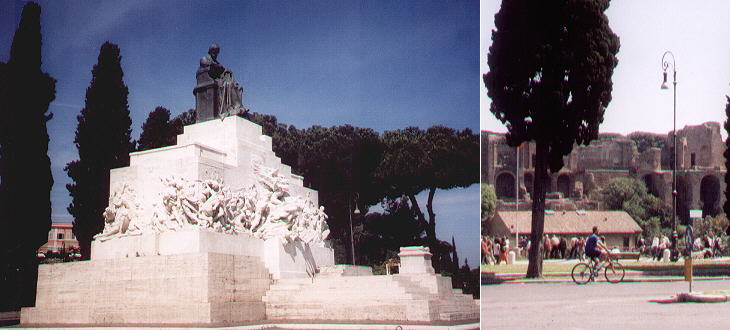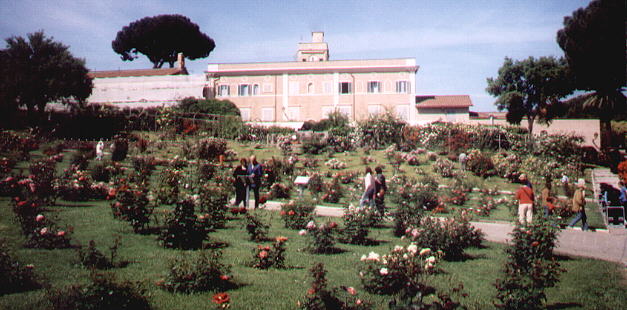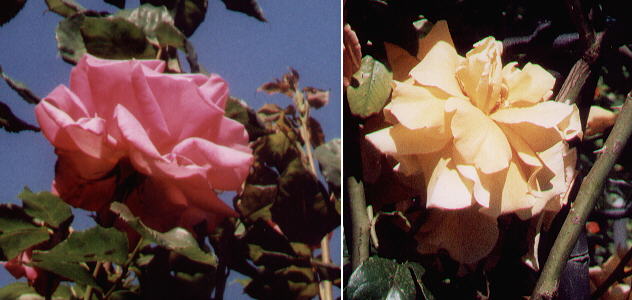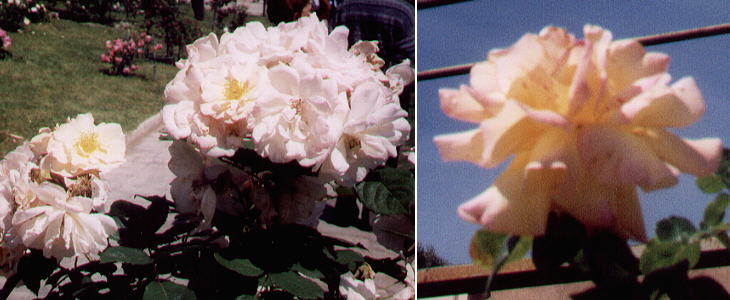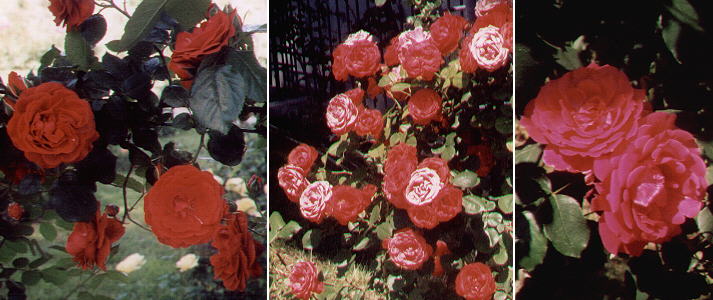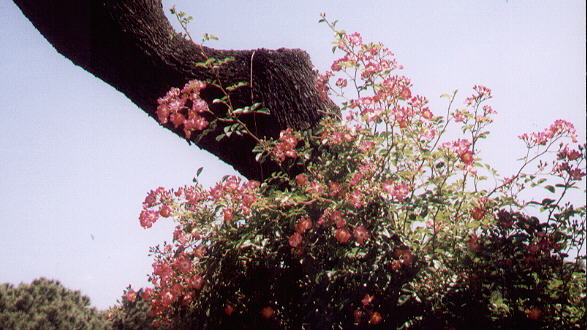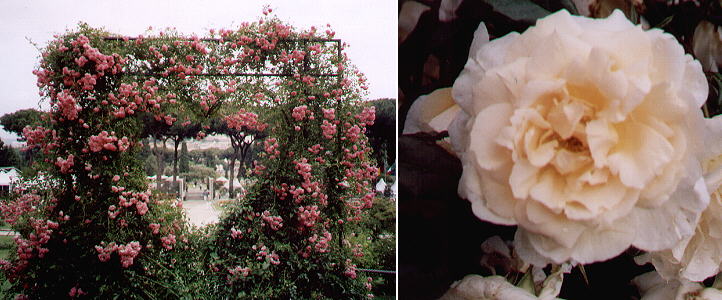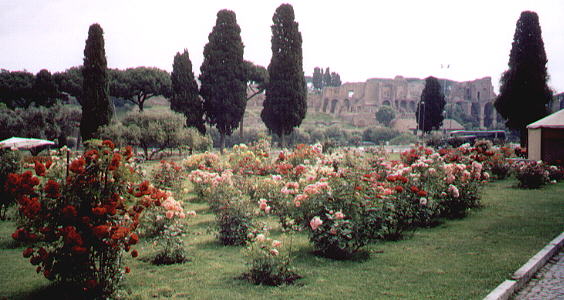  (how to spend a peaceful day in Rome) 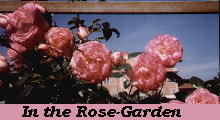 of Rome of Rome(Harlequin - Germany) Many cities in the world have rose-gardens which are celebrated for their design and for the number of
varieties they exhibit, but the rose-garden of Rome (Roseto Comunale di Roma) enjoys a location on the northern side of the Aventine,
which makes up for its inferior interest from a strictly horticultural viewpoint (see a page on nearby S. Prisca to see a map of the area).
The entrance to the rose-garden is presided over by a gigantic monument to Giuseppe Mazzini (1805-72) which was unveiled in 1949 at the centenary of the short-lived Roman Republic. The statue is a 1929 work by Ettore Ferrari, sculpted the same year the "Questione Romana", the quarrel between the Italian State and the Holy See (caused by the 1870 Italian conquest of Rome) had been settled and a large monument to Mazzini, a very determined opposer of the Papal State, could have caused undesired complaints from the Vatican. In 1949 Italy was no longer a kingdom, but a very young republic and Mazzini, who had envisaged for Italy a republican future, became a sort of father of the country and this led to the decision of erecting such a large monument. Giuseppe Mazzini during most of his life was regarded as a dangerous conspirator, an instigator of rebellions and acts of terrorism (in 1858, Felice Orsini, a former follower of Mazzini, made an attempt on the life of the French Emperor Napoleon III by throwing several bombs at the Opéra entrance, killing 8 people and wounding more than 150). Even after the completion of the Italian unity Mazzini, who had spent many years in exile in France, Switzerland and England, had to live in Italy under a false name and was regarded as a criminal by the police. His bronze statue now enjoys the view over the Circus Maximum and the Palatine.
The rose-garden was designed in the 1930s on the site of a XVIIth century Jewish Cemetery and the cypresses which border its lower part are those which provided shadow to the old tombs. Its upper part borders on one of the many monasteries existing on the Aventine. The rose-garden is split into two sections: the upper one shows the permanent collection of varieties of roses, grouped on a chronological basis. The lower part of the garden hosts every year the varieties taking part in Premio Roma, a competition among international floriculturists.
A small section of the garden is reserved for the roses of the Ancient World: Gallica means from France; Alba is the Latin adjective for white; Damascena means from Damascus.
The Romans found that their fragrance had inebriating properties. At the end of a lavish
banquet, when the guests were already excited by the effects of food and wine, the perfect host arranged for cascades of rose petals to fall from the ceiling. Notwithstanding its very epicurean character, this tradition did not get lost with the fall of the
Roman Empire: in some of the most sumptuous religious ceremonies, rose petals were allowed to fall on or thrown to the Pope (in S. Maria della Rotonda the petals fell from the opening in the vault).
The names given to the new varieties remind of almost forgotten celebrities: for much of the 1950s papers which specialize in gossip and love stories thought they had discovered a gold-mine in reporting all aspects of the unlucky life of Princess Margaret: she could not marry a RAF WWII hero because he was a divorced man and her case became a symbol of denied love. Bettina is the first name of a mannequin for whom Givenchy designed a very successful kind of blouse. She was the girlfriend (although in the 1950s maybe this word would not have been used) of Ali Khan, a very wealthy and glamorous man. They were one of the best known and elegant couples of the jet set.
Other varieties are linked to historical events. In particular Peace is the name given to a new variety developed immediately before WWII by a French floriculturist: he sent some specimens to correspondents he had in Europe and in the States. When after the war they could write to each other again, they decided to call this now very popular variety with the name of the event they had looked forward to for so many years: Peace.
Some varieties are named after literary characters: Porthos and Pinocchio clearly remind of their literary source; Albertine at first seems just the name of the wife or the daughter of the floriculturist who developed this variety: but on second thought one suspects that this rose which is not red and is not pink was most likely named after Albertine, the elusive protagonist of Proust's Recherche.
Italy does not have a leading role in the development of new varieties: the large majority of the varieties shown in the rose-garden come from France, Germany, Great Britain and the U.S.A. The image above shows one of the few exceptions, a small rambling rose developed in Italy by Maresa del Bufalo.
In the summer of 2004 the opening hours of the rose-garden were extended to 1 a.m. and it was provided with several temporary facilities including a restaurant and a cafè: exhibitions in various ways related to roses and flowers and (soft) musical performances attracted many Romans and foreigners. Most likely the initiative will be repeated in future summers. The image used as a background for this page shows the bell tower of S. Maria in Cosmedin seen from the rose-garden.
Other Days of Peace pages: At the Flea Market At the Beach A Sunny Day in Villa Borghese Christmas in Rome Voicing Your Views and feeling better! Eating Outdoors Celebrating the Foundation of Rome The procession of La Madonna de Noantri Finding Solace at the Protestant Cemetery
Go to my Home
Page on Baroque Rome or to my Home Page on Rome
in the footsteps of an XVIIIth century traveller.
|
All images © 1999 - 2004 by Roberto Piperno. Write to romapip@quipo.it (alternative e-mail address at romeartlover@katamail.com)
